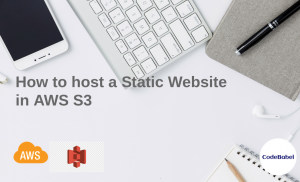
AWS EC2 Instance Types
Welcome back to the second article of the AWS Series! In this article, we will discuss about the different types of AWS EC2 instances that are currently offered by AWS. We will also discuss about their configurations and use cases.
We will look into the following topics in this article.
Relationship between Instance size and vCPU
It is important to understand what vCPU is, before jumping to the different categories of AWS EC2 instances. As we know, AWS EC2 instances support multithreading, which enables multiple threads to concurrently run on a single CPU core. Here, each thread is represented by a virtual CPU (vCPU) instance. In AWS terminology, “each vCPU is a thread of a CPU core, except for T2 instances”. Below table shows the common relationship between different instance EC2 instance sizes and vCPU.
Instance Size Vs vCPU
Generally, every instance has a default number of CPU cores and this number varies with instance type. Also, to suit specific workloads, AWS provides an option to customize the following CPU options while launching the instance:
- Number of CPU cores for the instance.
- Disable multithreading by specifying a single thread per CPU core.
The catch is that, there is no additional charge for specifying CPU options. This means, the cost is as same as launching an EC2 instance with default CPU options.
Types of AWS EC2 Instances
AWS EC2 instances are broadly classified into 5 major categories. Each type is optimized for specific set of applications. They are as below:
- General Purpose
- Compute Optimized
- Memory Optimized
- Accelerated Computing
- Storage Optimized
Now, let’s take a look at each of these types in detail.
Click here to learn about launching an EC2 instance using AWS management console.
General Purpose Instance Type
- As the name implies, they provide a balance of compute, memory and networking resources.
- In other words, it can be used for a variety of workloads.
- It is ideal for apps that uses resources in equal proportions. For example, web server and code repos.
- EBS optimized by default, with no additional cost.
- Also, support for Enhanced Networking using Elastic Network Adapter (ENA) is available.
- For applications which requires direct access to physical processor and memory, bare metal instance sized is available.
The below table describes the types of general purpose instances and their use cases.
Compute Optimized Instance Type
- They are designed for compute bound applications which require high performance processors.
- It can be used for compute intensive applications such as media transcoding, high perfomance web servers, gaming servers, machine learning inference.
- By default, EBS is optimized.
- Also, support for Enhanced Networking using Elastic Network Adapter (ENA) is available.
- For apps which require direct access to physical processor and memory, bare metal instance sized is available.
The below table describes the types of compute optimized instances and their use cases.
Memory Optimized Instance Type
- It is designed to deliver fast performance for workloads which process large sets of data in memory.
- Support for Enhanced Networking using Elastic Network Adapter (ENA) is available.
- EBS optimized by default, with no additional cost.
- For apps which require direct access to physical processor and memory, bare metal instance sized is available.
The below table describes the types of memory optimized instances and their use cases.
Accelerated Computing Instance Type
- They are used to perform complex computing in a very short duration of time.
- In order to achieve this, they use hardware accelerators or co-processors.
- It is used for applications which has complex functions such as floating point number calculations, graphics processing or data pattern matching.
- Also, support for Enhanced Networking using Elastic Network Adapter (ENA) is available.
The below table describes the types of accelerated computing instances and their use cases.
Storage Optimized Instance Type
- They are mainly used for storing huge volume of date sets in a optimized manner.
- Therefore, it can be used for workloads which requires high sequential read and write access those large data.
- Futhermore, it is designed to deliver very low latency, high throughput and also high IOPS (Random I/O operations per second).
- EBS optimized by default, with no additional cost.
- Also, support for Enhanced Networking using Elastic Network Adapter (ENA) is available.
- For apps which require direct access to physical processor and memory, bare metal instance size is available.
The below table describes the types of storage optimized instances and their use cases.
Conclusion
We have now reached the end of the article. We hope this article was informative and useful. You can also find more information about AWS EC2 instance types and their use cases here.
Please share your thoughts, questions, and suggestions in the comment section below. Do subscribe to our blog to stay up to date on any new articles.



